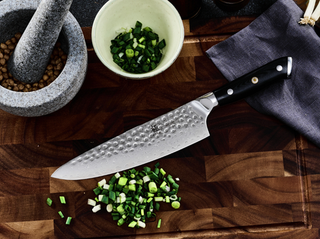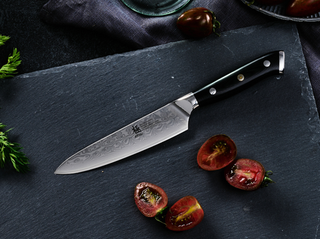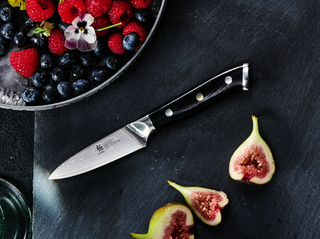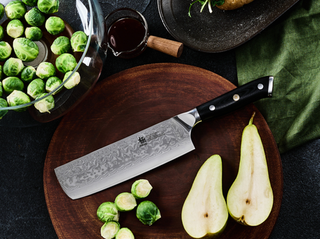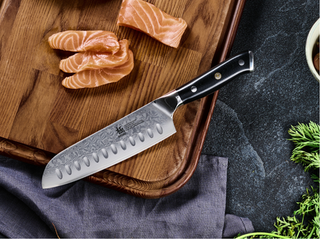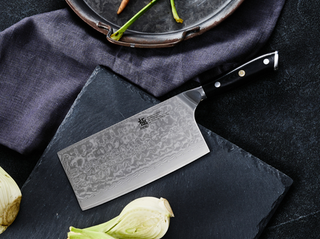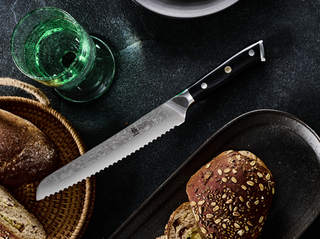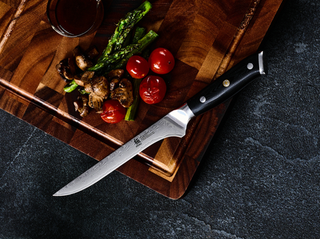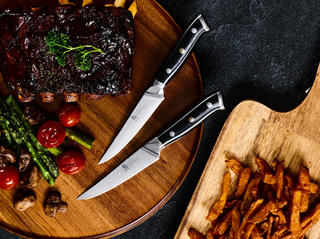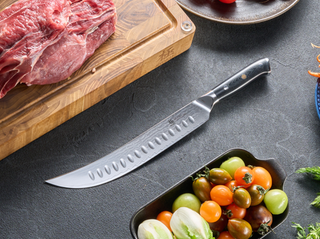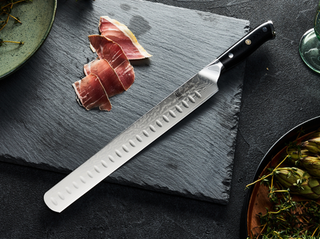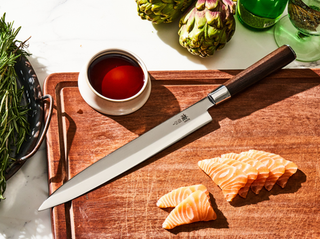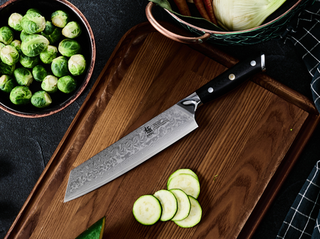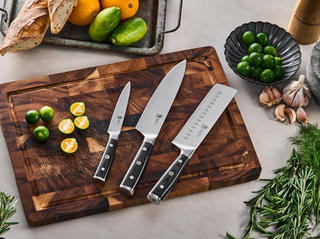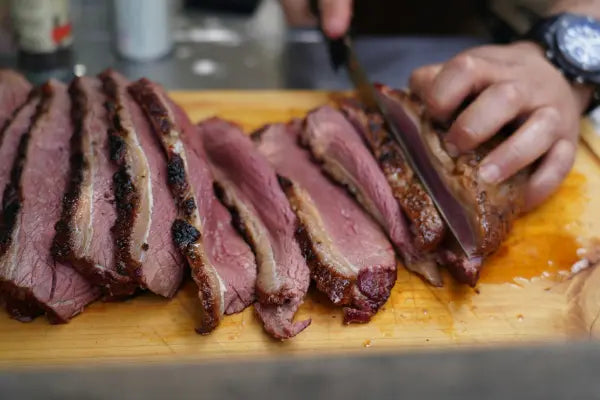Knowing how to serve a brisket is almost as important as knowing how to make it. And to make your brisket presentable and appetizing, you have to know how to cut it.
The secret to cutting a brisket all lies in how you handle the grain. When you learn how to cut brisket against the grain, you get slices that are juicy, tender, and packed with flavor.
Master this skill and equip yourself with the appropriate kitchen knife, and you will be able to cut a brisket easily, swiftly, and efficiently, whether you are cutting a whole brisket or just the flat.
How to Cut a Whole Brisket (Step-by-Step)
To cut a whole brisket successfully, you need to understand the two parts that make up the whole brisket and how to handle each part with your knife.
There are two parts to the whole brisket:
- the flat (which is the lean part) and
- the point (which is the fattier part).
To cut a whole brisket successfully, you need to separate the flat and the point, trim the fat, and locate the grain in each section.
Follow these steps:
1. Let It Rest First
Firstly, don’t rush. Allow the cooked brisket to rest for about 30 to 45 minutes after it’s finished cooking. Setting it aside lets the juices settle back, which softens the brisket and makes it easier for you to slice cleanly.
2. Separate the Flat and Point
- Secondly, put the brisket with the fat side up and look for the thin layer of fat separating the flat and point sections.
- Next, carefully use a sharp knife to cut through the meat. You will need a sharp and precise knife. This 8" Gyuto Chef Knife has a low-angle blade, which makes it easier to cut smoothly through the meat.
3. Trim the Fat (If Needed)
Thirdly, there are people who like to enjoy fat in their meat, yet I usually remove any extra fat to enjoy it clean.
4. Locate the Grain in Each Section
Lastly, it’s especially important to study this part thoroughly. The grain has different directions on the flat and the point of the stainless steel. I adjust the position of each piece to guarantee that I am slicing across the grain as I cut.
How to Cut Brisket Against the Grain (Steps)
Cutting brisket against the grain requires a lot of care and precision, especially when it comes to slicing.
First, you need to identify the grain, then slice with long strokes, and be able to change and adapt your strokes to match the direction of the grain.
Follow these steps to cut brisket against the grain:
1. Spot the Grain
The word “grain”, when it comes to brisket, describes how the fibers in the muscle run. To “cut against the grain” means to cut perpendicular to the direction of the grain.
It might seem complicated, but it gets easier with time and practice.
2. Use the Right Knife
When it comes to cutting a brisket, the knife does matter. I have a preference for Japanese knives, and I have a few recommendations listed below.
I will say, go for a Japanese Chef's knife. Japanese VG-10 steel is firm but not too heavy, and a pattern like the Daimyo pattern or Koi scale pattern cuts your brisket in a way that stays unstuck, and the knife keeps its edge.
3. Slice with Long, Smooth Strokes
No sawing! Long single strokes allow me to cut even amounts of brisket. It ensures that your brisket is kept whole and looks nice when serving.
4. Adjust as the Grain Changes
Always remember that the grain moves in a different direction at the point. I turn the brisket a little to one side as I go along.
How to Cut Brisket Flat
Cutting a brisket flat is one of the easiest ways to cut a brisket. The flat of the brisket is naturally leaner and more uniform. Line up the grain, use a shart knife, and cut into small ¼ inch slices. Follow these steps:
1. Line Up the Grain
I always make sure to check the grain direction once more before beginning to slice the flat. Following the trail in one direction is simpler since it goes in a straight line.
2. Use a Sharp Paring Knife for Precision
Cutting the flat of a brisket demands precision, so I generally switch to a pairing knife. Pairing knives are slim, firm, and built for precision.
This 3.5" Damascus Paring Knife has a VG-10 alloy and packs a hardness level of 58–60. It is perfect for cutting along the edges or getting rid of tough silver skin.
3. Cut 1/4-Inch Slices
The thickness works great here. Firm yet soft enough that it can be used on a sandwich or plate without breaking.
Conclusion: How to Cut a Brisket the Right Way
Mastering how to cut a brisket properly makes every bite better. Always be sure to cut against the grain, move slowly, and keep using sharp blades.
Trust me, once you learn how to cut brisket flat and whole, you’ll never go back to guesswork. Keep the best knives (preferably Japanese knives, of course), and allow your brisket to be the centerpiece of your dish.
So, are you ready to cut with confidence? Improve your cutting skills by using Kyoku’s specially designed chef’s and paring knives, which work well on brisket and other meats.
Learn how to mince chicken at home like a pro
